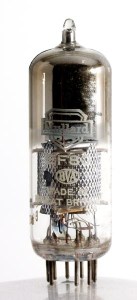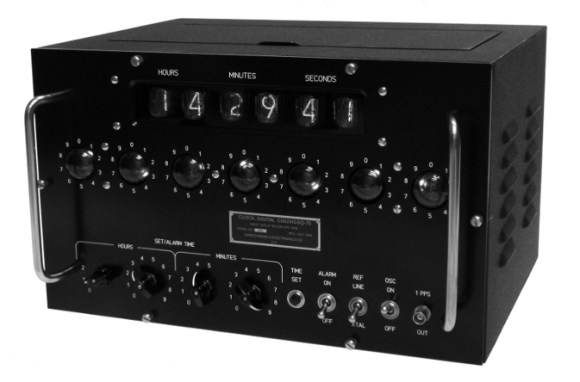A few weeks ago, [Yann] was dumpster diving and found something of interest. Two vacuum tubes, an ECC83S and an EL84. This was obviously the droppings of a local guitarist, but [Yann] wanted to know if he could build something useful out of them. An amplifier is far too pedestrian, so he settled on a vacuum tube computer.
The normal pentodes and triodes you’ll find in a tube amp require a lot of support components like output transformers, tube sockets, and high voltage power supplies. This was a little too complicated for a tube computer, but after a little bit of searching, [Yann] found a better option for his MINIVAC — subminiature vacuum tubes. These require fewer support components, and can be found for very reasonable prices through the usual component suppliers. His entry for this year’s Hackaday Prize is Hot Logic. It’s a computer — or at least computer components — built out of these tubes.
The tubes in question are a few 1Ж29Б-В and 6Н21Б tubes, a vacuum pentode and dual triode, respectively. Add in a few diodes, and that meets the requirements for being sufficient to build a computer. As a neat little bonus, these tubes have requirements that are very easy to meet. The filament on the 1Ж29Б-В tube only needs 1.2 Volts.
These subminiature tubes are a little underappreciated in the world of audiophililia and DIY electronics. That’s a bit of a shame; these tubes are the most technologically advanced vacuum-based technology ever created. They were the heart and the brains of ballistic missiles, and if you look hard enough you source hundreds of them at very reasonable prices. A vacuum tube computer requires a lot of tubes, and if anyone will be able to build a vacuum tube computer it’s going to be [Yann] and his pile of Soviet surplus.

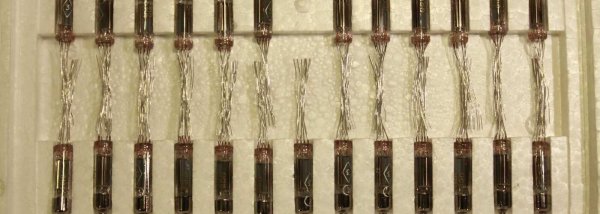




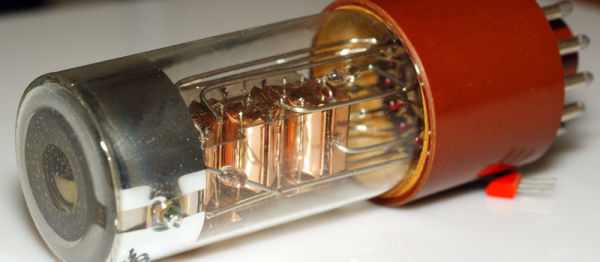


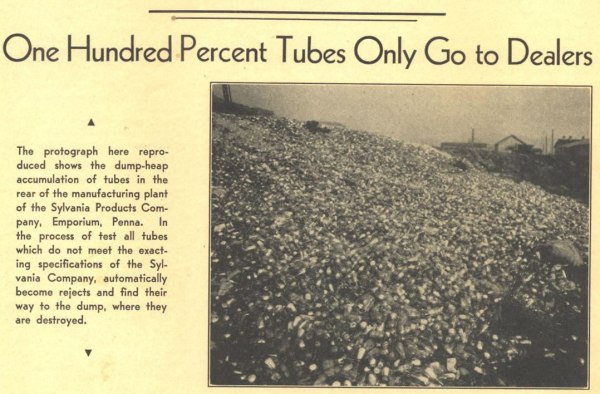
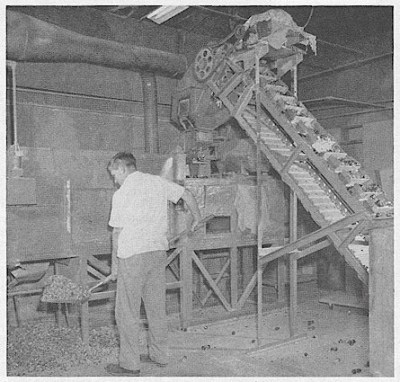 For Sylvania, one of the largest tube manufacturers of the golden age, this meant producing a lot of duds. A mountain of them, in fact, as you can see in the picture above.
For Sylvania, one of the largest tube manufacturers of the golden age, this meant producing a lot of duds. A mountain of them, in fact, as you can see in the picture above. 